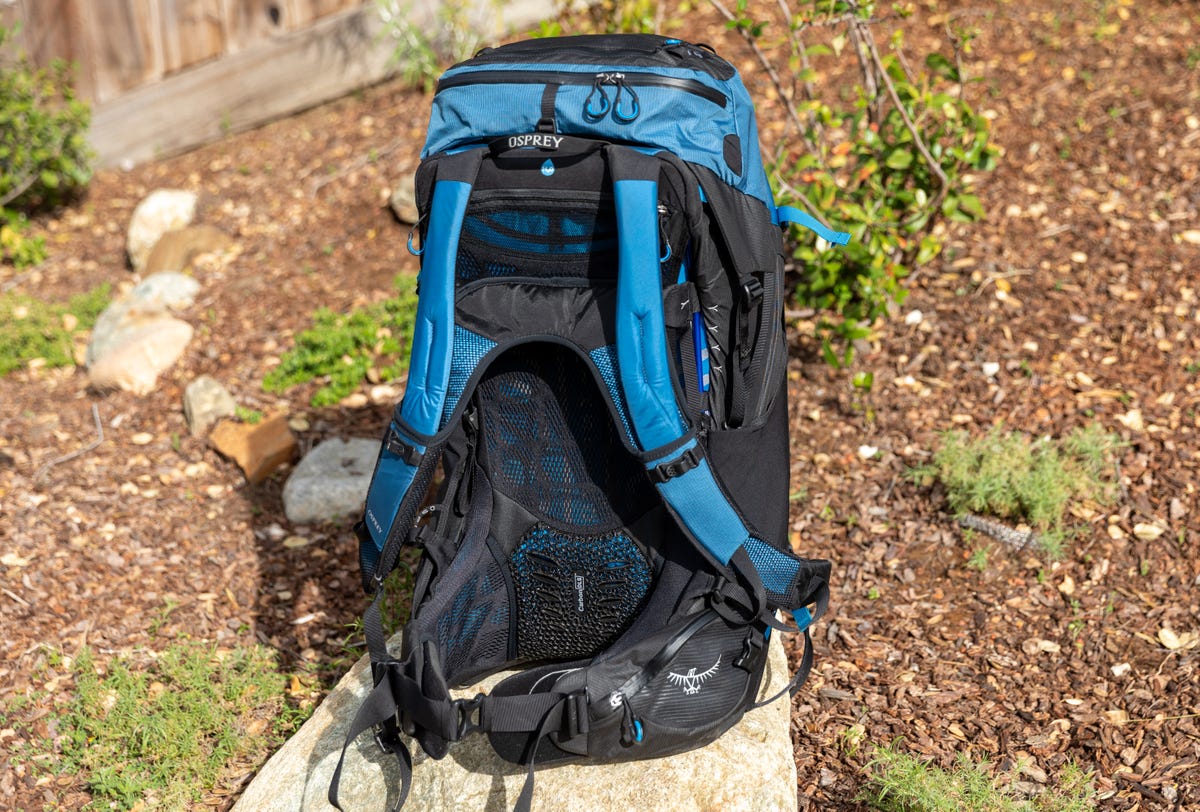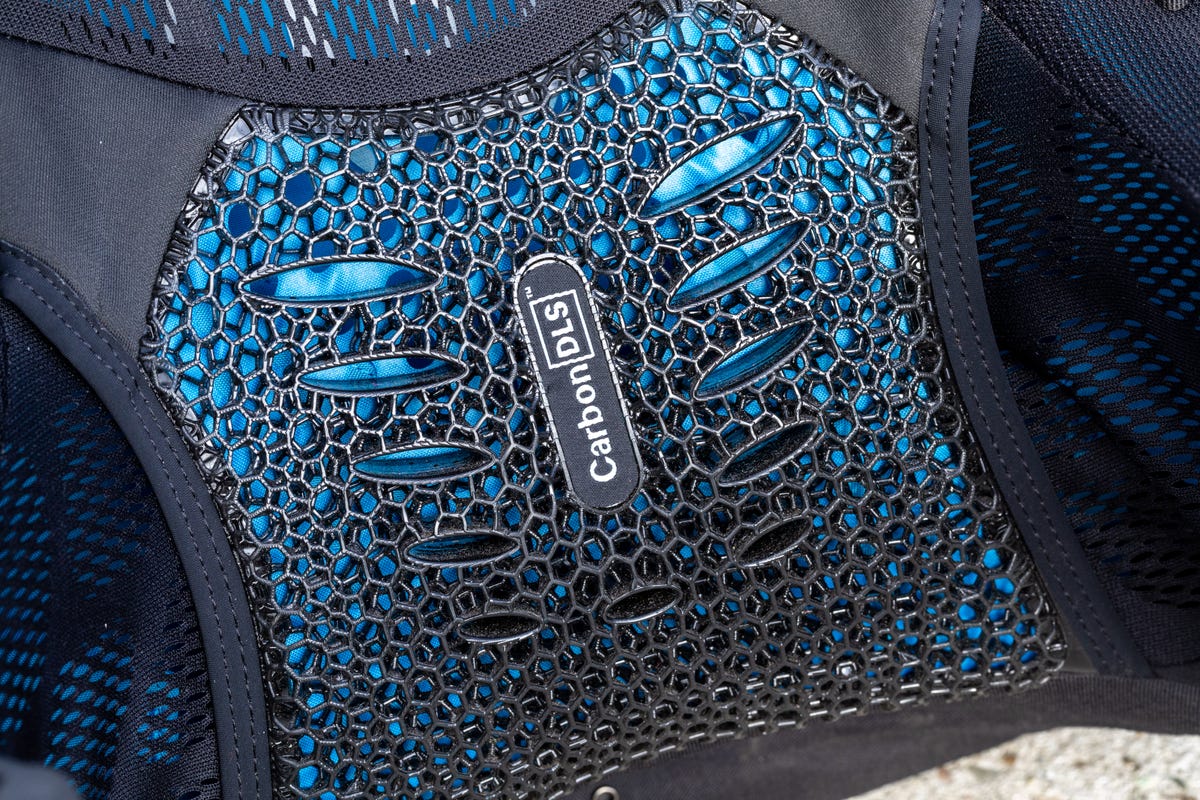A new backpack with a ventilated, lightweight padding went on sale Tuesday, demonstrating manufacturing techniques that are only possible because of 3D printing technology.
The Osprey Unltd, a new line of $700 backpacks designed for multiple-day excursions, uses a specialized technology from Carbon, a leader in 3D printing. The company’s Digital Light Synthesis method was used to make lower-back padding with an airy lattice construction.
The Unltd (pronounced “unlimited”) packs are designed to help hikers shoulder a big load. The 3D printed pad fits against the small of your back, a key area for long-haul backpacks because it’s where you carry heavy items like food and tents. In addition to the lumbar pad’s ventilation benefit, it’s also got a nonslip texture to help keep the pack from moving around.
While $700 is a lot — similar Osprey packs without the new tech range from $140 to $400 — the price tag is high by design. With the Unltd lineup, Osprey decided to use premium tech and construction and to let go of cost restraints.
3D printing, often called additive manufacturing, got its start with hobbyists and prototyping projects. But increasingly, it’s also used for product manufacturing. Carbon’s ability to make 3D lattices out of a squishy material known as an elastomer that’s also used in bike saddles, running shoes and football helmets. As the technology matures, 3D printing is spreading to industries like autos, dentistry, medicine and sporting goods.
My own backpack is an elderly Osprey model, so I was curious to check out progress in materials and design in the 25 years or so since I’d bought mine. I briefly tried the Osprey Antigravity 64 model of the Unltd line.


Osprey’s Unltd backpack is designed to make heavy loads more comfortable. Its lumbar padding is 3D printed.
Stephen Shankland/CNET
3D Printing
- 3D printing gets faster and more reliable with new Carbon models
- Prusa SL1S 3D Printer Review: Etsy Sellers Are Going to Love It
- Best 3D Printer for 2022
- HP’s Metal Jet 3D printer may build your next car’s innards
Although I didn’t get a chance to use it on a real backpacking trip with a heavy load, I did load it up with camping gear in a shorter test. It was more comfortable, adjustable and much lighter weight than my own pack. Materials and construction clearly have improved, although with only a short test, I can’t vouch for a quarter-century usable lifespan.
Other features in the packs include:
- A metal suspension frame in the Antigravity model that uses aluminum where it needs to be stiff and steel where springiness is more desirable for hiking in more difficult situations where balance is important.
- The Airscape, designed for hiking in more straightforward circumstances, has a steel frame and more ventilation.
- For fabric, both packs use 210D nylon with double the usual number of rip-stop fibers and with UHMWPE (ultra-high molecular weight polyethylene) materials for greater toughness.
- An attached rain cover can be pulled out of a pocket and flipped over the pack.
- A top that can be converted into a waist pack for day hikes.


The 3D printed lumbar padding in Osprey’s Unltd backpack is airy, compressible, lightweight and grippy.
Stephen Shankland/CNET




